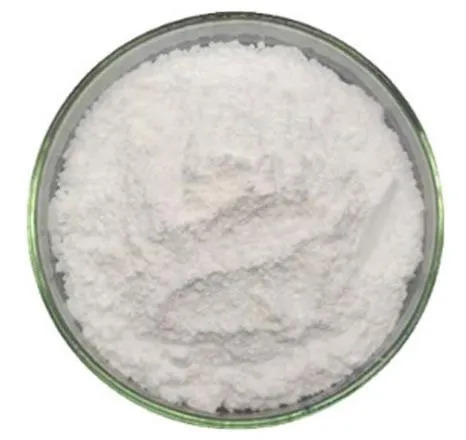Warning: Undefined array key "title" in /home/www/wwwroot/HTML/www.exportstart.com/wp-content/themes/1198/header.php on line 6
Warning: Undefined array key "file" in /home/www/wwwroot/HTML/www.exportstart.com/wp-content/themes/1198/header.php on line 7
Warning: Undefined array key "title" in /home/www/wwwroot/HTML/www.exportstart.com/wp-content/themes/1198/header.php on line 7
Warning: Undefined array key "title" in /home/www/wwwroot/HTML/www.exportstart.com/wp-content/themes/1198/header.php on line 7
- Afrikaans
- Albanian
- Amharic
- Arabic
- Armenian
- Azerbaijani
- Basque
- Belarusian
- Bengali
- Bosnian
- Bulgarian
- Catalan
- Cebuano
- China
- China (Taiwan)
- Corsican
- Croatian
- Czech
- Danish
- Dutch
- English
- Esperanto
- Estonian
- Finnish
- French
- Frisian
- Galician
- Georgian
- German
- Greek
- Gujarati
- Haitian Creole
- hausa
- hawaiian
- Hebrew
- Hindi
- Miao
- Hungarian
- Icelandic
- igbo
- Indonesian
- irish
- Italian
- Japanese
- Javanese
- Kannada
- kazakh
- Khmer
- Rwandese
- Korean
- Kurdish
- Kyrgyz
- Lao
- Latin
- Latvian
- Lithuanian
- Luxembourgish
- Macedonian
- Malgashi
- Malay
- Malayalam
- Maltese
- Maori
- Marathi
- Mongolian
- Myanmar
- Nepali
- Norwegian
- Norwegian
- Occitan
- Pashto
- Persian
- Polish
- Portuguese
- Punjabi
- Romanian
- Russian
- Samoan
- Scottish Gaelic
- Serbian
- Sesotho
- Shona
- Sindhi
- Sinhala
- Slovak
- Slovenian
- Somali
- Spanish
- Sundanese
- Swahili
- Swedish
- Tagalog
- Tajik
- Tamil
- Tatar
- Telugu
- Thai
- Turkish
- Turkmen
- Ukrainian
- Urdu
- Uighur
- Uzbek
- Vietnamese
- Welsh
- Bantu
- Yiddish
- Yoruba
- Zulu
Oct . 21, 2024 01:24 Back to list
How Saccharin is Produced and Its Key Ingredients Explained
Understanding Saccharin A Sweet Revolution from Coal Tar
Saccharin, one of the earliest artificial sweeteners, has a storied history that dates back to the late 19th century. Its discovery was accidental, yet it revolutionized the way we think about sweetness in our food and beverages. But what is saccharin made from, and how does this simple compound manage to deliver such an intense sweet flavor? Let's dive into the origins, composition, and impact of saccharin.
Saccharin was first discovered in 1879 by a chemist named Constantin Fahlberg, who was working on coal tar derivatives. While conducting experiments, he noticed that a substance on his hands made his food taste unusually sweet. This substance turned out to be saccharin, a derivative of toluene, which is often sourced from coal tar. This remarkable find opened the doors to a new understanding of sweetness and provided a solution for those seeking sugar alternatives.
Understanding Saccharin A Sweet Revolution from Coal Tar
One of the main characteristics that set saccharin apart is its stability. Unlike natural sugars, which can caramelize or undergo chemical changes when exposed to heat, saccharin retains its sweetness even under high temperatures. This makes it a popular ingredient in cooking and baking, particularly in low-calorie or sugar-free products. It’s often found in diet sodas, sugar-free gum, and various packaged foods, allowing consumers to indulge in sweetness without the calories associated with sugar.
saccharin is made from

However, saccharin's journey has not been without controversy. Initially, it was celebrated as a sugar substitute, especially during World War I when sugar was rationed. Yet, in the 1970s, saccharin faced scrutiny due to studies linking it to bladder cancer in lab rats. As a result, it was subjected to warning labels and was even banned in certain countries. However, extensive research and further studies eventually debunked these initial fears, leading to the official conclusion that consumption of saccharin is safe for humans. The FDA removed the warning label requirement in 2000, signifying a turning point in public perception and acceptance of the sweetener.
Today, saccharin is often classified as a Generally Recognized As Safe (GRAS) substance by the Food and Drug Administration (FDA). This designation implies that it is deemed safe for consumption based on scientific evidence and expert consensus. Moreover, saccharin’s low-calorie nature makes it a favored option for individuals managing weight or dietary restrictions, such as those with diabetes.
As the world becomes more health-conscious, the demand for natural and artificial sweeteners continues to rise. Saccharin, with its roots in coal tar and chemical ingenuity, remains a key player in the sweetener market. Its unique properties offer a versatile solution for various culinary applications while providing individuals the option to enjoy sweetness without the associated caloric load.
In conclusion, saccharin has transformed over the years from a curious laboratory discovery to a staple in the food industry. Its production from coal tar, coupled with its intense sweetness, highlights the fascinating intersection of science and culinary arts. Despite its controversial past, saccharin has reclaimed its position as a widely accepted sugar alternative, proving that innovation in food technology can lead to new opportunities for healthier lifestyles. As consumers continue to seek options that align with their dietary needs, saccharin will likely remain a relevant and valuable ingredient in our kitchens for years to come.
Latest news
-
Certifications for Vegetarian and Xanthan Gum Vegetarian
NewsJun.17,2025
-
Sustainability Trends Reshaping the SLES N70 Market
NewsJun.17,2025
-
Propylene Glycol Use in Vaccines: Balancing Function and Perception
NewsJun.17,2025
-
Petroleum Jelly in Skincare: Balancing Benefits and Backlash
NewsJun.17,2025
-
Energy Price Volatility and Ripple Effect on Caprolactam Markets
NewsJun.17,2025
-
Spectroscopic Techniques for Adipic Acid Molecular Weight
NewsJun.17,2025

